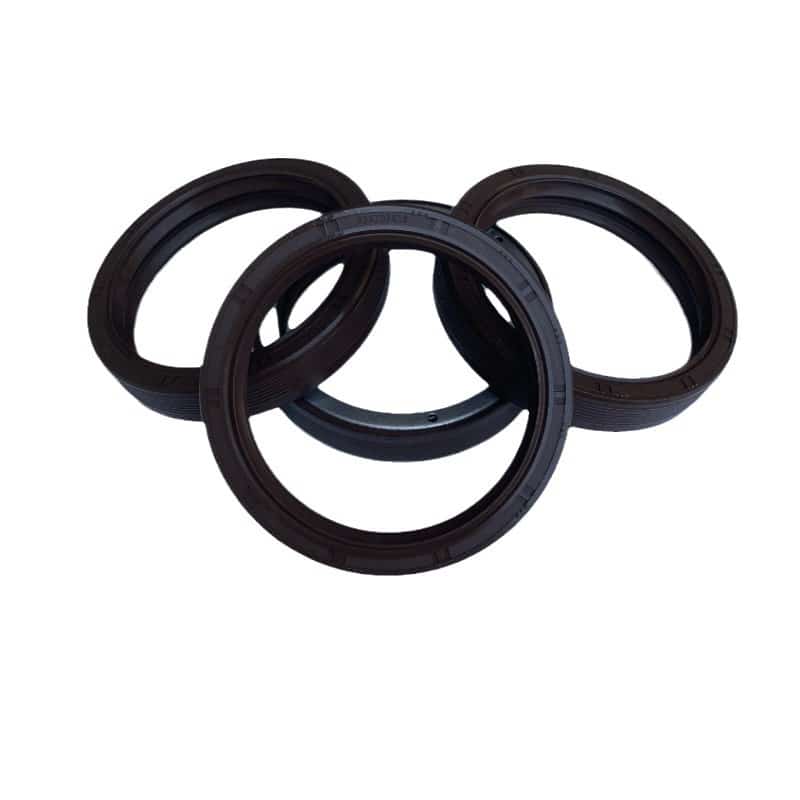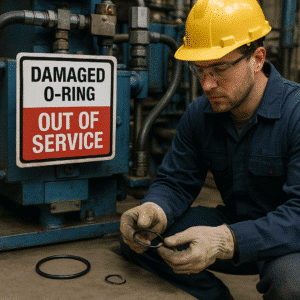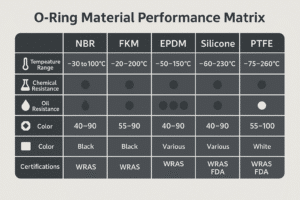Improper storage of oil seals and rubber components can cause hardening, cracking, deformation, and early failure. How should you correctly store these critical parts to ensure optimal performance?
Proper storage extends the lifespan of oil seals and rubber components by maintaining their flexibility, elasticity, and sealing performance.

Correct handling and storage prevent material degradation before installation, reducing maintenance costs and minimizing equipment downtime.
Why is proper storage important for oil seals and rubber components?
Environmental factors such as heat, humidity, ozone, and UV light can significantly affect rubber materials during storage.
Exposure to unfavorable conditions can cause rubber seals to lose elasticity, leading to leaks and mechanical failures.

Selecting durable materials like EPDM O-Rings or FKM vs NBR O-Rings also improves the storage resilience of sealing components.
What environmental conditions should be avoided when storing rubber seals?
Certain environmental factors accelerate the aging process of rubber seals if not properly managed.
Avoid direct sunlight, high temperatures, high humidity, ozone exposure, and contact with solvents or oils during storage.

Storage areas should maintain a stable temperature between 15°C to 25°C with controlled humidity, ensuring rubber materials retain their original properties.
How should oil seals and rubber components be packaged for storage?
Proper packaging is essential to protect seals from environmental exposure during storage.
Oil seals should be individually wrapped or stored in airtight containers, preferably in opaque packaging to shield them from light and ozone.
When sourcing O-Ring assortment kits or seal kits, choosing sealed packaging enhances long-term storage reliability.
What is the recommended storage duration for oil seals?
Even under ideal conditions, oil seals have a limited shelf life that should be respected.
Generally, rubber seals can be stored for up to 5 years if kept under appropriate conditions, but certain high-performance materials like PTFE last even longer.

Referencing PTFE sealing solutions is advisable for long-term stockpiling in harsh environments.
How can you inspect stored oil seals before use?
Before installation, it is critical to inspect stored seals for any visible signs of aging or damage.
Inspect for surface cracks, hardening, discoloration, or deformation, and discard any seals showing degradation.
Maintaining a first-in, first-out (FIFO) inventory rotation ensures the oldest products are used first, maintaining stock freshness and seal reliability.
Conclusion
Proper storage of oil seals and rubber components preserves material properties, extends service life, and ensures consistent sealing performance. Adhering to best practices helps avoid premature failures and unnecessary replacements.
Need reliable oil seals with flexible customization and fast delivery?
Hengoseal provides high-quality oil seals, O-Rings, and customized sealing solutions ready to ship globally.
Email: [email protected]
WhatsApp: +86 17622979498
Related topic
- High-Temperature Sealing: How to Prevent Failures in Extreme Conditions?
- How to Extend the Lifespan of Your Rotary Shaft Seals?
- How to Extend the Lifespan of Pneumatic Cylinder Seals?
- Rubber Seal Restoration: How to Rejuvenate Aged or Cracked Seals?


